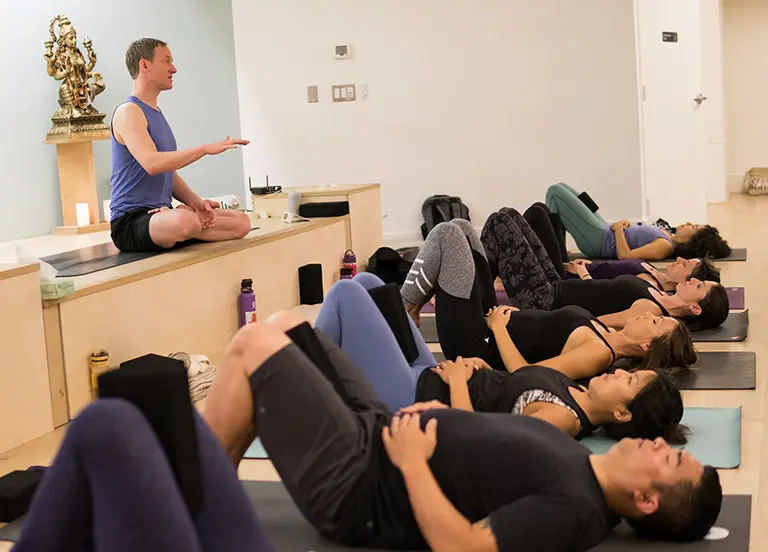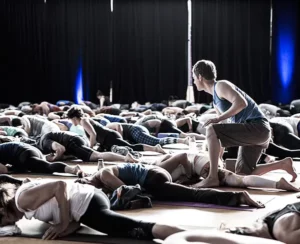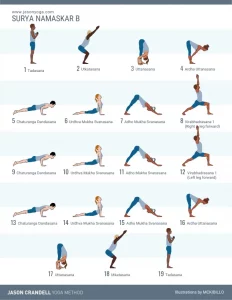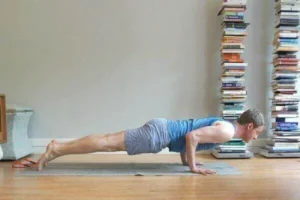As we discussed in Part I of this series, the ability to give clear, compelling verbal cues is one of the most distinguishing characteristics of a good teacher. If you haven’t read Part I, which examines the most common cueing errors we all make, take a moment and read it here. Like all skills, you can significantly improve your verbal cues for yoga class with a clear strategy and a little practice.
To up your verbal cueing game, you’ll want to minimize the various pitfalls that all teachers encounter. Then start to include the following verbal cueing techniques when you’re giving instructions. These tips will dramatically enhance your students’ classroom experience.
Tips for Improving Verbal Cueing for Yoga Teachers
Provide Landmarks
Do you remember how confusing it was to be a beginner? How you suddenly couldn’t discern your right from your left? How you didn’t know which way was up and which way was down? Providing landmarks (such as the wall, the windows, the clock) when you give instructions helps spatially orient your students and minimize this confusion. Providing landmarks that describe which direction the student is moving, rather than just telling them to turn a specific direction is hugely beneficial. For example, think about instructing twists. Your students’ bodies are so tied up, overlapped, and crisscrossed that their left is on their right and their right is on their left. Instead of saying, “Turn your torso to the right,” tell your students to “Rotate your torso toward the windows (or, whatever conspicuous landmark is to the right of your students).” Something as simple as instructing your students to “Reach your fingers toward the ceiling,” will improve the quality of your students’ action compared to telling them to “Reach your fingers up.”
Create Space
It’s not enough to provide good verbal cues. You also need to give students time to process and respond to them. This means providing time and space between each cue. The best way to do this is to simply take a breath between every instruction you provide. If your directions are clear and you provide enough space between each one, your students will be able to follow along. If, however, you give 15 instructions in a row with no breath or pause between, your students will be lost. Bottom line: Always provide time for your students to digest your words before blazing ahead.
Edit Yourself
What you do not instruct in class, allows what you do instruct to have greater impact. Don’t tell your students everything you know about each pose. Some teachers, your author included, are tempted to fill every second of class with instruction, precaution, lore, personal revelation, and more. After all, there are few moments when we have a captive audience for an hour and a half. But this is yoga class, not a storytelling seminar, so don’t overcrowd your students or compete with yourself. Stick to an average of three instructions per pose. You can use more instructions to get them into the pose, but once they are in the asana, be judicious. If these instructions are related to each other, richly descriptive, and relevant to the overall theme of the class, they will give your students plenty to work with while allowing them to have their own experience.
Give Instructions in Pairs
I was terrible at math, but when I think about good verbal cues the topic of Algebra comes to mind. Specifically, the process of keeping equations balanced. The teaching of yoga is rooted in the process of establishing and maintaining a sense of equilibrium. In yoga, we call this “sama” which loosely translates to equanimity. One of the most effective ways to facilitate the experience of equilibrium in a pose is to give your students instructions in complementary pairs. The best way to get a feel for this is through some examples. If someone is in Warrior II and you’re asking them to “deepen” their pose by lowering their front thigh further, complement this instruction by asking them to engage and lift their back thigh. This helps keep both halves of their pose balanced. Another example in Downward Facing Dog would be telling your students to stretch their inner heels down and while also asking them to lift their inner thighs. Again, you’re simply taking two parts of the same continuum and instructing them to move in opposite ways.
Use Your Students’ Names
As a yoga student yourself, you are well aware that everyone spaces out in class once in a while. Truthfully, whose eyes don’t glaze over after 90 minutes of impersonal and generalized instruction? Make your teaching more skillful and intimate by using your students’ names. Instead of repeating the same tired instructions, look at your students, and help them clarify, expand, or deepen their poses by relating to them directly. Try saying, “Jeff, please bend your front knee more deeply” or “Lauren, relax your neck and soften your jaw.” Personalizing instructions is not only a good way to take care of your students, it is the best way to make your communication direct and relevant. The added bonus is that everyone else in the room who needs to relax his or her neck will probably follow suit. Of course, you should use a soft, encouraging tone when you use names so that people don’t feel like they are being singled out or scolded.



